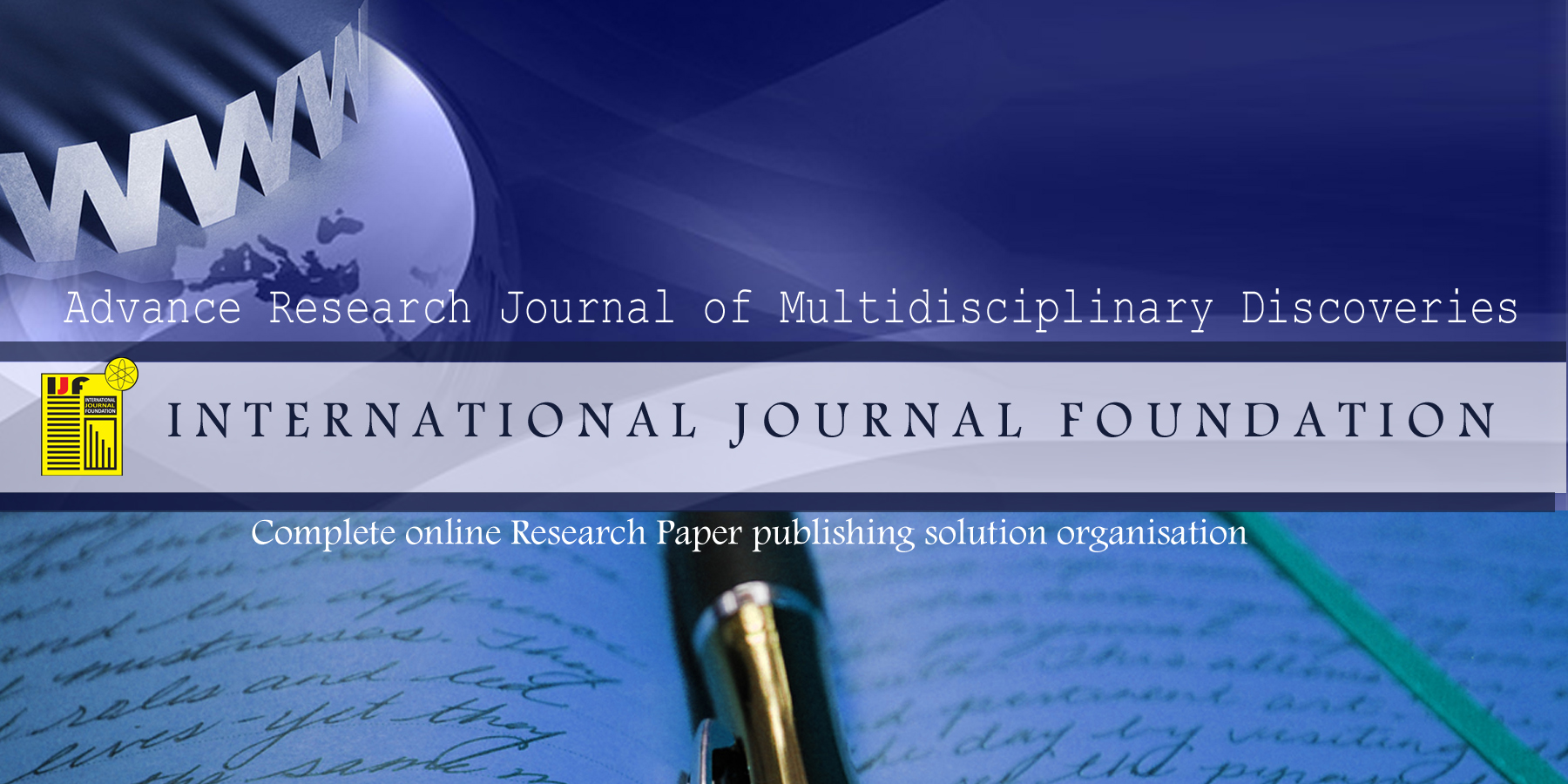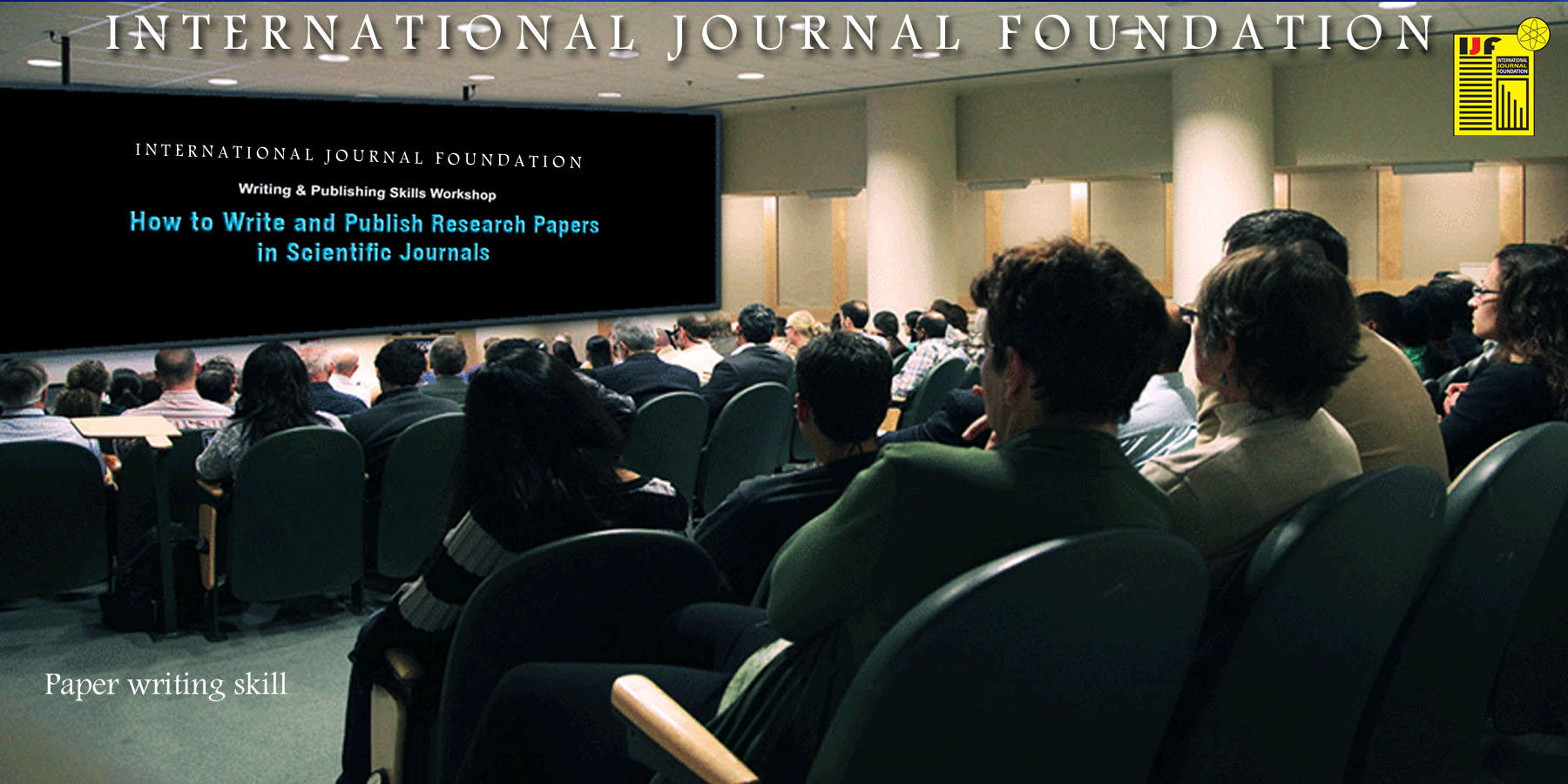Preparation of manuscript
Authors are requested to write category of article (original Research article, short communication, Review article, Case report) under which they want to publish it.
♦ Author’s/Co-author’s should write their email ID in title page with full affiliation details (present working address with designation if any otherwise name of the universities and address.
♦ Authors should keep their manuscripts as short as they reasonably can (the total number of words should not exceed 6000).
♦ Page number should appear in the lower right hand corner of each page, beginning with the title page.
♦ The language of manuscript must be simple and explicit.
♦ Author’s/Co-author’s name or any other identification should not appear anywhere in the body of the manuscript to facilitate blind review.
♦ We accept manuscript under following categories:
• Original Research Articles
• Review Articles
• Short communications
• Case report/study
Word Limit
The manuscript should be written within the word limit according to the category of article as mentioned below. This word limit does not include Abstract.
• Original Research Article: 6000
• Short Communication: 3000
• Review Article: 5000
• Case Report/Study: 3000
To know more about the preparation of manuscript ‘ Instruction to Author’s’ doc. / pdf
Download Sample Manuscript Template doc. or pdf.
Submission of manuscript
♦ Authors should submit electronic version (Microsoft word doc and pdf both) of the manuscript to the viagra soft editor via e-mail and you have to mentioned your journal where you want to publish is mandatory.
♦ Accepted papers will be acknowledged and processed further. Manuscripts will not be returned, if rejected. If author doesn’t receive status of article within 30 days from the date of submission, kindly enquire by email.
♦ Acceptance or rejection of the manuscript would be decided after the decision of editorial team.
A. Ethics in publishing
Author will be required to accept the ‘IRFSD Publishing Ethics’ when you submit your paper to the journal. The statement covers authorship, originality and conflicts of interest.
To verify the originality of submitted paper, your paper may be checked by the originality detection service software.
The authors are suggested to abide following guidelines while preparing the manuscripts’ for submission-
1. Text formats
a) The authors are suggested to submit manuscript in any underlying formats-
(1) Microsoft Word (doc or docx)
(2) Rich Text Format (RTF)
(3) Portable Document Format (PDF)
(4) Open Document Format (ODF)
b) Make sure you use uniform lettering and sizing of your original artwork.
c) Your entire submission (including references) should be 1.5 spaced in font type- Times New Roman or Calibri with font size- 11 point. The margin of the document should be one inch. The pages of the manuscript must be numbered.
2. Language
a) Prepare manuscripts in either English/Bengali/Hindi or Sanskrit
b) Your writing should be comprehensible to editors and reviewers and your writing style should ideally be concise and accessible.
c) In addition, you should always have your manuscript read by at least two other people to avoid typing errors before submitting to a journal.
3. Title Page
a) Front page should contain title, forenames and surnames of all authors and each author’s affiliations with a clear indication of who is associated with which institution.
b) Supply a short title of no more than 50-80 characters.
c) Authors are suggested to avoid specialist abbreviations.
d) Authors are suggested to make the title a clear and concise summary of their specific findings.
4. Author name(s):
Full name of the authors with full postal and email addresses for each author. Please indicate with(*) mark who the corresponding author is.
5. Abstract:
a) Provide a brief summary of paper within 250 words and do not include references in it.
b) The abstract should succinctly and clearly introduce the topic of the paper.
c) Abstract should highlight the most important results and explain any conceptual advances arising from them.
6. Keywords:
Keywords up to 6 keywords (in alphabetical order) which will enable subsequent abstracting or information retrieval systems to locate the paper.
7. Introduction
a) Ensure that Introduction should not contain subheadings.
b) Introduction should succinctly provide the background information that is required to set the results into their proper biological context.
8. Results
a) This section should describe the results of the experiments performed
b) This section can be broken up by subheadings.
c) Ensure that the distinction between new results and published findings /established facts is clear.
9. Discussion
This section should explain the significance of the results and should place them into a broader context.
Please note- In case of research reports, the Results and Discussion sections should be combined into a single section.
10. Acknowledgements
a) Acknowledgements should be grouped into a single paragraph placed after the Discussion section.
b) Authors are advised to acknowledge only people who have made substantial contributions to the study, and provide the affiliation of those you name.
c) Provide the names and affiliation details of members of collaborating bodies.
d) Financial support for the study should be acknowledged in a separate support statement.
11. Article References citing guidelines
Each reference cited in the text must be listed in the References section.
Authors are advised to list the citations in References section in Vancouver format according to the following specimen style:
Author details (surname and initial(s)): Article title ‘Journal name’ (if known), volume no-, page numbers.
For example-
Mondal,S.K. and Banerjee, S.(2021) Title of the manuscript, ‘Polyphony’, vol-1,pp. 01-07.
12. Tables
a) Insert tables into the main text document using the Table function in your word processing package.
b) Please do not supply tables in a separate file.
c) Number the tables consecutively.
d) Limit data to a sensible number of significant figures.
e) Avoid large tables if possible.
f) Provide a clear footnote for each table, making sure all abbreviations and symbols used are defined.
g) Include tables as part of the manuscript file.
13. Figures
a) Supply line-art figures and photographic images in JPEG, TIFF or PDF format.
b) Graphs or bar charts may be supplied in Excel or similar spreadsheet format.
c) Don’t embed images in the main manuscript file. Supply them separately.
d) All submitted figures must be clearly named and numbered.
e) Whether for images, drawings or graphs, avoid using more than four panels for a single figure. These should be labelled as a), b), c) and d).
f) Label your images such that all important details are clearly marked, but avoid obscuring large areas of the images with excessive labelling.
g) Ensure that bar charts and graphs have a white background, with no shading or gridlines.
h) Provide a clear caption for each figure.
i) Captions should be brief and should not be repetitive of information given in the text.
j) All abbreviations should be expanded.
*****
For any enquiry you may write us at
article.ijf@gmail.com
















